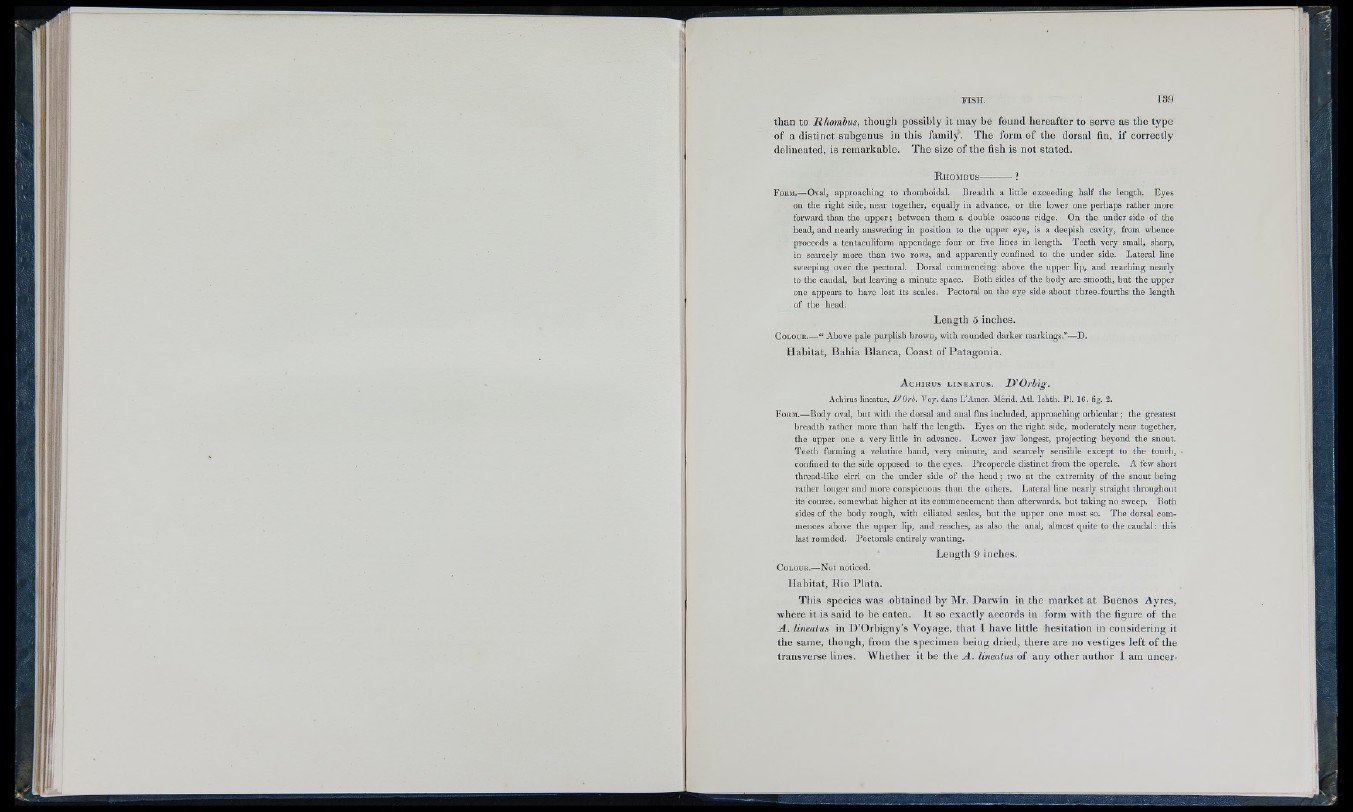
than to lihomhus, though possibly it may be found hereafter to serve as the type
of a distinct subgenus in this family. The form of the dorsal fin, if correctly
delineated, is remarkable. The size of the fish is not stated.
R h o m b u s ?
F o rm .— Oval, approaching to rhomboidal. B readth a little exceeding half the length. Eyes
on the right side, near together, equally in advance, or the lower one perhaps rather more
forward than the u pper; between them a double osseous ridge. O n the under side of the
head, and nearly answering in position to the upper eye, is a deepish cavity, from whence
proceeds a tentaculiform appendage four or five lines in length. T eeth very small, sharp,
in scarcely more than two rows, and apparently confined to the under side. L ateral line
sweeping over the pectoral. Dorsal commencing above the upper lip, and reaching nearly
to the caudal, but leaving a minute space. B oth sides of the body are smooth, but the upper
one appears to have lost its scales. Pectoral on the eye side about three-fourths the length
of the head.
Length 5 inches.
C o l o u r .—“ Above pale purplish brown, with rounded darker
Habitat, Bahia Blanca, Coast of Patagonia.
I.” — D .
A c h i r u s l i n e a t u s . D'Oi-hig.
Achirus lineatus, D'Orb. Voy. dans L’Amer. Merid. Atl. Ichtli. PI. 16. fig. 2.
F o rm .— Body oval, but with the dorsal and anal fins included, approaching orbicular ; the greatest
breadth rather more than half the length. Eyes on the right side, moderately near together,
the upper one a very little in advance. Lower jaw longest, projecting beyond the snout.
T eeth forming a velutine band, very minute, and scarcely sensible except to the touch, •
confined to the side opposed to the eyes. Preopercle distinct from the opercle. A few short
thread-like cirri on the under side of the h e a d ; two at the extrem ity of the snout being
rather longer and more conspicuous than the others. L ateral line nearly straight throughout
its course, somewhat higher at its commencement than afterwards, but taking no sweep. Both
sides of the body rough, with ciliated scales, but the upper one most so. T he dorsal commences
above the upper lip, and reaches, as also the anal, almost quite to the caudal: this
last rounded. Pectorals entirely wanting.
Length 9 inches.
C o l o u r .—N ot noticed.
Habitat, Rio Plata.
This species was obtained by Mr. Darwin in the market at Buenos Ayres,
where it is said to be eaten. It so exactly accords in form with the figure of the
A . lineatus in D ’Orbigny’s Voyage, that I have little hesitation in considering it
the same, though, from the specimen being dried, there are no vestiges left of the
transverse lines. Whether it be tlie A . lineatus of any other author I am uncer